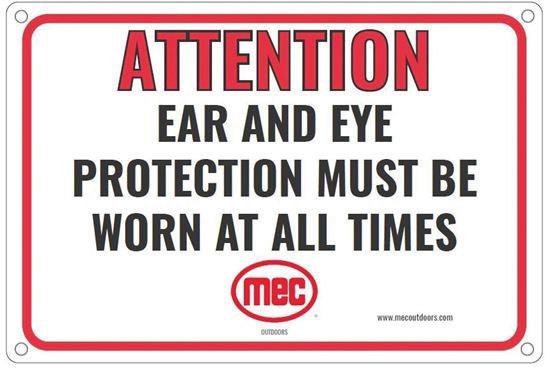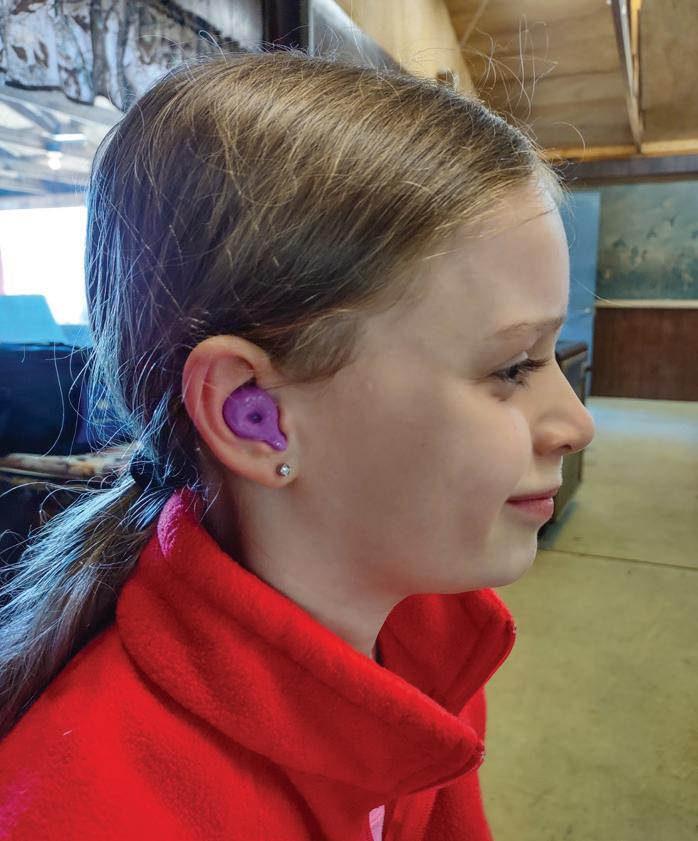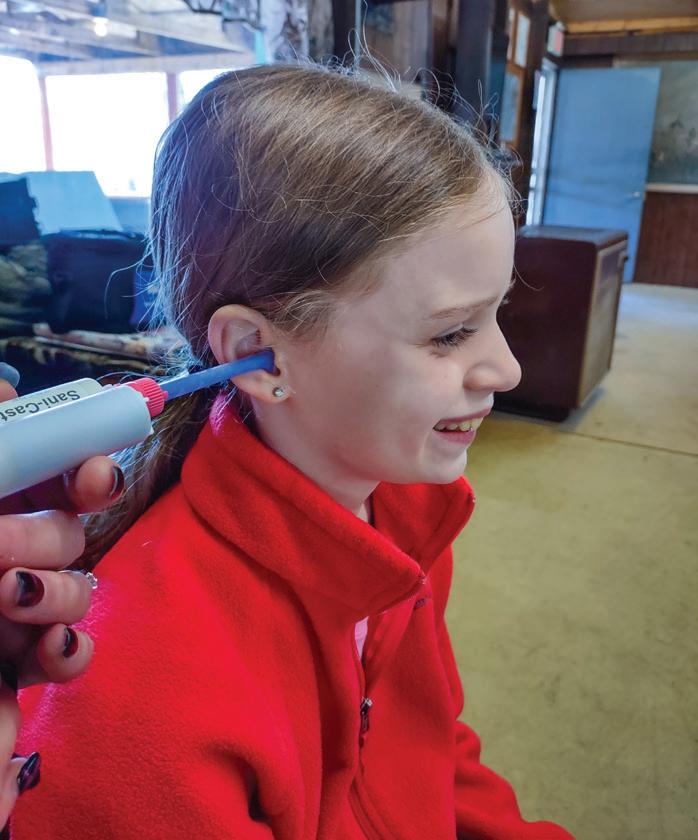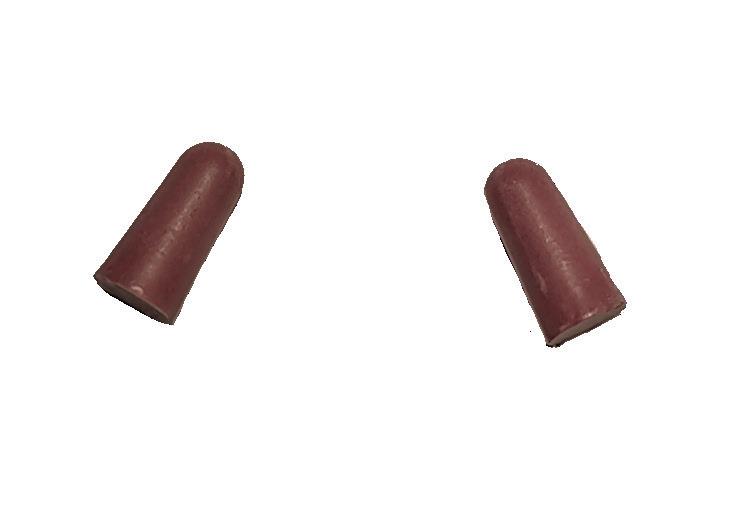
4 minute read
“The Right Way to Protect Little Ears”
It’s no big secret that hearing protection is a must for shooters and spectators, but it’s just as important to make sure that the hearing protection one uses is effective. This is particularly important for youth with growing and developing bodies. Is the hearing protection commonly used working as designed? Do the users of these products know how to properly use them? What are the most effective types of ear protection? We’ll look at these questions and focus part of this on youth. You might just be surprised at what you learn in this article.
The Technical Stuff
Advertisement
Sound is measured in units called decibels, more specifically A-weighted decibels (dBA). The Occupational Safety and Health Administration has identified the levels of acceptable and dangerous levels of noise exposure for humans working in any industry. This assessment is equally applicable to individuals participating in the shooting sports. Consequently, hearing protection is rated utilizing the same (dBA) but in the context of noise reduction rating (NRR).
Except for my three-year-old granddaughter, when she goes into her excited screaming mode during her evening “zoomies”, the average person-to-person conversation ranges between 60 and 70 decibels and is generally considered a safe level. Based on the OSHA determination, a single exposure or repeated exposure to any sounds at or above 85 decibels can lead to hearing loss. The report of a firearm starts at 140 decibels and can increase from there based on multiple factors. A single exposure from the report of a .22 long rifle without hearing protection doubles the minimum acceptable level of noise for a human.
Common Types of Hearing Protection
The types of ear protection most commonly used are foam ear plugs, solid molded ear plugs and earmuffs. Types and technical aspects of each of the aforementioned methods for hearing protection tend to vary. Electronic control of the sound levels, Bluetooth capability are just a few of the options for high tech hearing protection available. Many shooters use what are commonly referred to as “foamies.” These foamies are cheap, readily available and easy to use. The custom fitted and molded ear plugs start at a very reasonable cost but can get pricey with the addition of electronics or other accoutrements. Earmuff style hearing protection generally offers the same options as the molded ear plugs but without the need to insert a device into the ear canal.
How Effective are These?
Being the most common type used, foamies are perhaps the one type that has the most possibility of being compromised by improper use. When it comes to hearing protection, the name of the game is “noise reduction rating.” This rating tells the user how much the device can reduce exposure to potentially damaging noise when properly applied. For the shooting sports, an NRR rating of no less than 28 is recommended. It is important to note that there are earplugs on the market which only have an NRR as low as 22, so it is important to know what your ear plugs are rated for.
Expert estimates suggest that as much as 98 percent of foam earplug users do not insert and utilize the product correctly. When properly applied, foamies completely seal the ear canal when fully expanded. The major reasons that foamies fail to work as designed are; not being deeply seated enough in the ear canal and not having space to fully expand due to improper sizing. The reason expansion is important is in the design of the plug. When fully expanded, the foam creates very small air spaces which serve to block and alter the sound waves exposed to the ear.
Custom molded ear plugs and properly rated ear muffs both perform at a high level to protect the hearing of the wearer. Both have options for electronic devices that would allow noise to freely pass up to a safe level, while blocking potentially damaging levels of sound. This makes communication between shooters much easier and eliminates the potential for a shooter to remove ear protection in order to talk to another shooter, exposing them to possible damage. Both are good options but remember, the ear muff may impact a shooter’s gun mount and can hit the stock of a long gun when mounted.
The Impact on Young Ears and Learning

It’s commonly understood that hearing loss in adults can lead to some maladies like depression and other conditions that impact quality of life. However, the impact hearing loss can have on children reaches further than most consider. First, the statistics seem to point toward some children being misdiagnosed with, or screened for behavior issues and learning disabilities, when they actually have a hearing problem. The CDC says that fifteen percent of children ages six to nineteen have lost a minimum of sixteen decibels in at least one ear. Children with this level of hearing often present behavioral and learning problems such as restlessness in class, lapses in concentration and hyperactivity because of this disconnection. It’s been suggested that a student with hearing loss in one ear has about a thirtyfive percent chance of failing a grade. All the above culminates in a reduced quality of life for a young one trying to learn and make their way through childhood.

As one can now understand, little ear canals are not yet sized to handle a pair of standard sized foam earplugs out of the one box available at the gun club. It would be impossible for the foam to expand adequately to interrupt the sound waves as it was designed. It is vital to make sure the safety equipment our youth shooters are using is properly sized and appropriately used. Custom molded ear plugs are a great option but make sure to check for proper fit each subsequent year as the youth grows. As the ear canal grows, it would be prudent to have new molded plugs made. Properly rated ear muffs are provided it does not interfere with proper gun mount. They are my personal choice for pistol shooting but interfere with my shotgun mount and would scratch and dent the


I would encourage all shooters and parents of youth shooters to do their due diligence in ensuring the hearing protection they or their youth shooters are employing is truly protecting their hearing. Check the noise reduction rating, the sizing and make sure you and your youth shooter are using the product properly. n
Editor’s note: Matthew Gay is a shooting instructor from Michigan, the Head Coach of the Olivet College Clay Target Team, Vice-President of the Michigan Scholastic Clay Target Program Board of Directors, a bunker trap junkie and Master Class Sporting Clays competitor.











